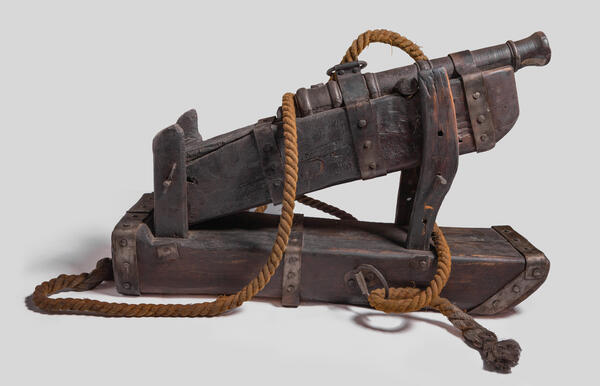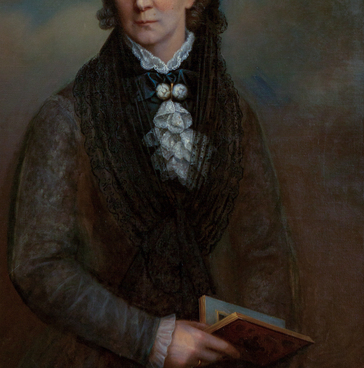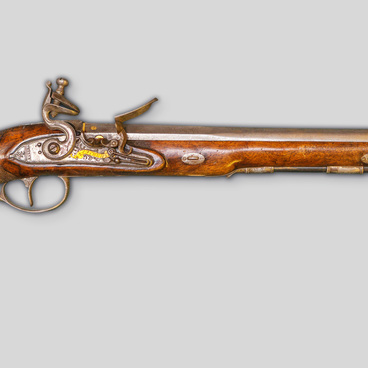The Ivanovo Museum of Local History has an extensive and diverse collection of weapons. The “Arsenal” exhibition of the Museum of Industry and Art presents one of the earliest examples of firearms — a 17th-century hand cannon.
According to the researcher Denis Sheremetev, the Russian word “pishchal” used for this type of cannon comes from Common Slavic and initially meant “whistle”, or “pipe”. Judging by the chronicle records, from the end of the 14th century, this word was already used to denote cannons and then hand-held firearms at least from the mid-16th century. The term with this meaning was actively used by representatives of all social classes in the 17th century. Such cannons were made from cast iron, and their design was quite simple: a barrel in the form of a metal pipe with a touch hole in the breech section. The cannon was loaded through the barrel, where powder and bullets were placed.
Initially, different cannons were very similar in design. The differences started to appear at the end of the 15th century with the invention of matchlocks. In the 16th century, a hand flintlock pistol was invented, which would be used in the army until the 18th century. In fact, it was somewhat of a Russian version of the musket. The weapons went out of use when the army was reformed by Peter the Great. Such cannons were used as hand-held weapons and placed in a stock to reduce the recoil force. Early models were fired with or without a mount, nevertheless, the long stock was clutched between the arm and the torso. Later, the curve of the stock was improved, reducing the recoil force and kicking the barrel upwards. Sometimes they were placed on a special stand — a carriage, just like the exhibit on display.
The exhibition presents a winter variation of the
cannon. This is evidenced by the carriage, which made it easier to transport
the canon in the snow. In the 15th century, the cannon was fired
when positioned on the shoulder, which was made possible by a special groove in
the buttstock. It is significant that the touch hole and the barrel are
arranged at quite a distance from the body and face of the shooter, which may
indicate the efforts to protect the shooter from sparks and even a barrel burst
in case it ever happened. Cannons were mainly used for shooting live targets.
The range of such weapons was not very long — no more than 150 meters.





